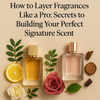
How to Layer Fragrances Like a Pro: Secrets to Building Your Perfect Signature Scent

The Art and Science of Layering Fragrances: A Complete Guide.
Master the art of fragrance layering — learn tips, techniques, and do’s & don’ts to build unique, lasting scent combinations.
Introduction
In the world of perfumery, layering fragrances is akin to composing a symphony. Rather than relying on a single scent, layering allows you to build complexity, enhance longevity, and express your personality in a deeply personal way. If you want your signature scent to be multi-dimensional, long-lasting, and uniquely yours, fragrance layering is the technique you need in your toolkit.
But layering isn’t just “throw two perfumes together” — done poorly, it can clash, become muddled, or overwhelm. In this guide, we’ll walk through everything from basic principles to expert tips so you can layer fragrances like a pro.

Why You Should Layer Fragrances
Before diving into the how, let’s understand why layering fragrance is worth learning:
1. Depth & Complexity
By combining complementary scents, you let different notes shine at different times. The top, middle, and base notes interplay over hours and create a richer olfactory experience.
2. Personalization & Uniqueness
Instead of wearing the same scent as others, layering gives you a “bespoke” signature — a custom blend that’s unique to you.
3. Improved Longevity
A supporting base scent (like a body oil or lotion) can help the top fragrance cling to your skin longer, slowing down evaporation.
4. Scent Fatigue Prevention
Our noses get accustomed to a single scent. Layering introduces subtle shifts over time, keeping your fragrance fresh to your own nose.
5. Seasonal Adaptability
You can adapt your blend for the season — e.g. crisp citruses in summer with a soft musk, or warm spice + amber in fall.

Fragrance Layering Fundamentals
Here are the core principles you should keep in mind when layering:
1. Understand Note Families & Compatibility
Fragrances are built of top, middle (heart), and base notes. Not all notes play well together. A few approaches to compatibility:
Shared “hero note” layering — pick two scents that share a prominent ingredient (e.g. vanilla, rose, sandalwood) so the overlap gives harmony.
Contrast + balancing — pair a fresh citrus or aquatic with a deeper woody or musky scent.
Use one scent as a “base”, and then add another as an accent — the base carries the weight; the accent provides nuance.
Be careful with intensely strong notes like oud or heavy vanilla; they can dominate and suppress lighter partners.
2. Layer From Light to Heavy
Start with the lighter or more volatile scent first (so it doesn’t get suffocated), then layer the richer base or supporting scent on top (or vice versa, depending on effect). Many experts suggest the strongest fragrance goes first, followed by lighter ones that “float” above.
3. Use Complementary Formats
You can layer across formats — not just perfumes. Try:
Body lotion / cream (matching or neutral)
Scented oil or serum
Solid perfume or balm
Hair mist
Eau de parfum / eau de toilette on top
Using multiple formats creates “scent anchors” on the skin, helping the fragrance last and evolve more naturally.
4. Apply Strategically
Don’t douse yourself — layering is about subtlety.
Use pulse points (wrists, neck, behind ears) for one scent, and broader areas (arms, hair) for the other.
Give each layer a moment to dry before adding the next.
Consider applying one scent to clothing, hair, one to skin, to create dimension.
5. Test & Adjust
Because skin chemistry affects how a fragrance unfolds, always test your combination on skin first. Let it sit 30–60 minutes and evaluate whether it’s harmonious or overpowering. Adjust accordingly (a drop less of one, more of the other) until it feels balanced.
Step-by-Step: How to Layer Fragrances
Here’s a suggested workflow for beginners:
1. Pick Your Base or Foundation
Choose a neutral or supporting scent — a soft musk, a light musk-vanilla, sandalwood, or even unscented lotion. This is your “canvas.”
2. Select an Accent Fragrance
Choose a second perfume that will complement, contrast, or highlight notes in the base. Think citrus, floral, fresh, spice, etc.
3. Apply Base / Body Product First
If using lotion, oil, or balm, apply lightly to hydrate and prime your skin.
4. Spritz / Apply Accent / Top Layer
Once the base is set, apply the accent fragrance. Use clean air between spritzes to allow layers to settle.
5. Evaluate & Tweak
Let the scents mingle for 30–60 minutes, then assess. If one scent is dominating too heavily, reduce that layer next time.
6. Document Your Combos
Keep a small journal: scent A + scent B in ratio 1:2, etc. Over time, you’ll catalog your favorite blends.
5 Popular Layering Combinations & Ideas
To get you started, here are some tried-and-true combos you might try:
Layer Pair Why It Works Try This Ratio / Tip
Soft musk / sandalwood + a clean citrus (bergamot, lemon) Musk gives softness, citrus gives lift 2 sprays citrus over 1 spray musk
Rose / soft floral + a sheer vanilla The vanilla deepens and smooths the floral Use vanilla as base, floral as accent
Fresh aquatic + light green notes Evokes fresh sea breeze with dewy greens Use green as base, aquatic on top
Spicy amber + soft powdery or iris Warm meets airy contrast Use amber as anchor, powdery on top
Clean cotton or linen + any accent scent A “blank slate” + highlight Use the clean/comfy scent first, then your favorite
You can take inspiration from guides like Allure, which recommends pairing a light floral with richer notes, while warning against overpowering materials like oud.

Mistakes to Avoid in Fragrance Layering
To make sure your layering efforts always feel polished, steer clear of these pitfalls:
Over-layering (too many scents at once)
More than two or three can become chaotic, not elegant.
Clashing notes
Avoid pairing strong gourmand (e.g. heavy chocolate) with bold woody or frankincense unless well balanced.
Neglecting skin chemistry
Because fragrance behaves differently on each person’s skin, what smells great in the bottle may not in practice.
Heavy application
The more you spray, the more likely the blend becomes overwhelming. Less is more.
No “dry down” time
If you don’t let layers settle, they’ll mix in an unintentional way.
Ignoring format consistency
If all layers are too “strong,” you lose nuance. Mixing formats helps manage strength.
Tips & Tweaks from the Experts
Use neutral or lightly scented base creams or body oils to anchor your scent. Many fragrance lovers apply almond oil or unscented lotion before layering.
Try hair mists or hair perfume as one of the layers — hair holds scent differently and contributes to an ambient halo.
Build a discovery kit or fragrance sample collection, so you can experiment affordably.
Don’t fear “mono-note” perfumes — combining two fragrances with the same hero note (e.g. two vanilla-based scents) can amplify and enrich the shared characteristic.
Use seasonal layering: lighter, fresher scents in spring/summer; warmer, deeper in fall/winter.
Take a cue from fashion layering: the base (foundation garments) supports the outer, more visible pieces. In scent layering, your base (musk, sandalwood, etc.) supports the accent aroma.
Frequently Asked Questions (FAQ)
Q: Will layering perfumes damage the scent or skin?
A: No — if done thoughtfully. Use quality formulas, avoid overwhelming acids or tonics, and don’t over-spray. Start with safe anchor scents and test in small amounts.
Q: How many fragrances can I layer?
A: One to two is ideal for most. Three can work if carefully calibrated. Beyond that, it becomes harder to control harmony.
Q: Should I layer the same brand or mix brands?
A: You can mix brands — what matters most is the notes, not the brand. But starting with pre-designed layering sets (from one brand) may help you see how scents interact.
Q: Do I need special storage or preparation?
A: Store in a cool, dark place. You don’t need anything special beyond basic perfume care. For layering sessions, having fragrance blotters or strips to test helps.
Q: How do I know if my blended scent is “good”?
A: After dry-down (30–60 min), it should smell integrated, balanced, and evolving. You should detect shifts — not one scent overtaking the rest.
Closing Thoughts
Layering fragrances is a creative, rewarding journey. Rather than being confined to a single scent, you get to compose evolving, personal olfactory stories. It teaches you to listen to your nose, calibrate subtly, and discover new facets in your favorite perfumes.
Start with two well-matched scents, take notes, adjust over time — and soon you’ll be crafting blends that feel uniquely you. Happy layering!
Ready to create your own signature blend?
Explore our collection of niche and designer fragrances at AromaTick.com — where quality, creativity, and individuality meet.
Follow us on Instagram @AromaTickLLC for layering tips, new arrivals, and exclusive scent pairings.
















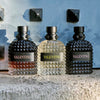

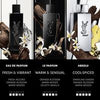

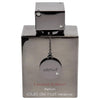







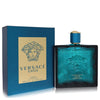
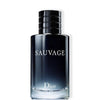


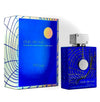





Comment (0)